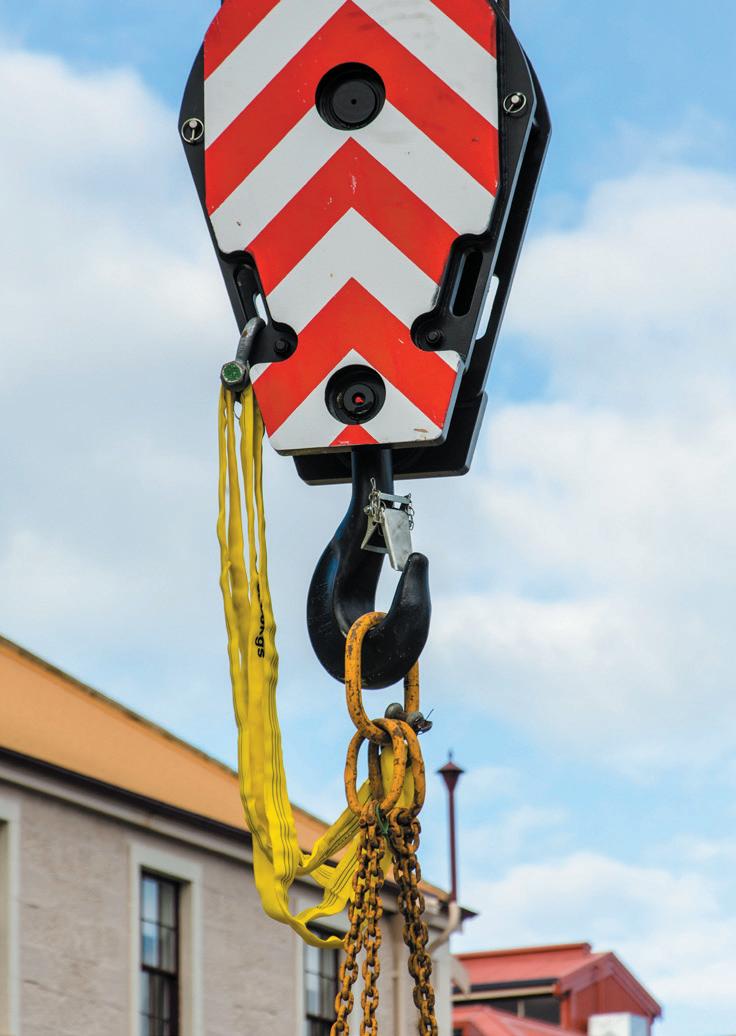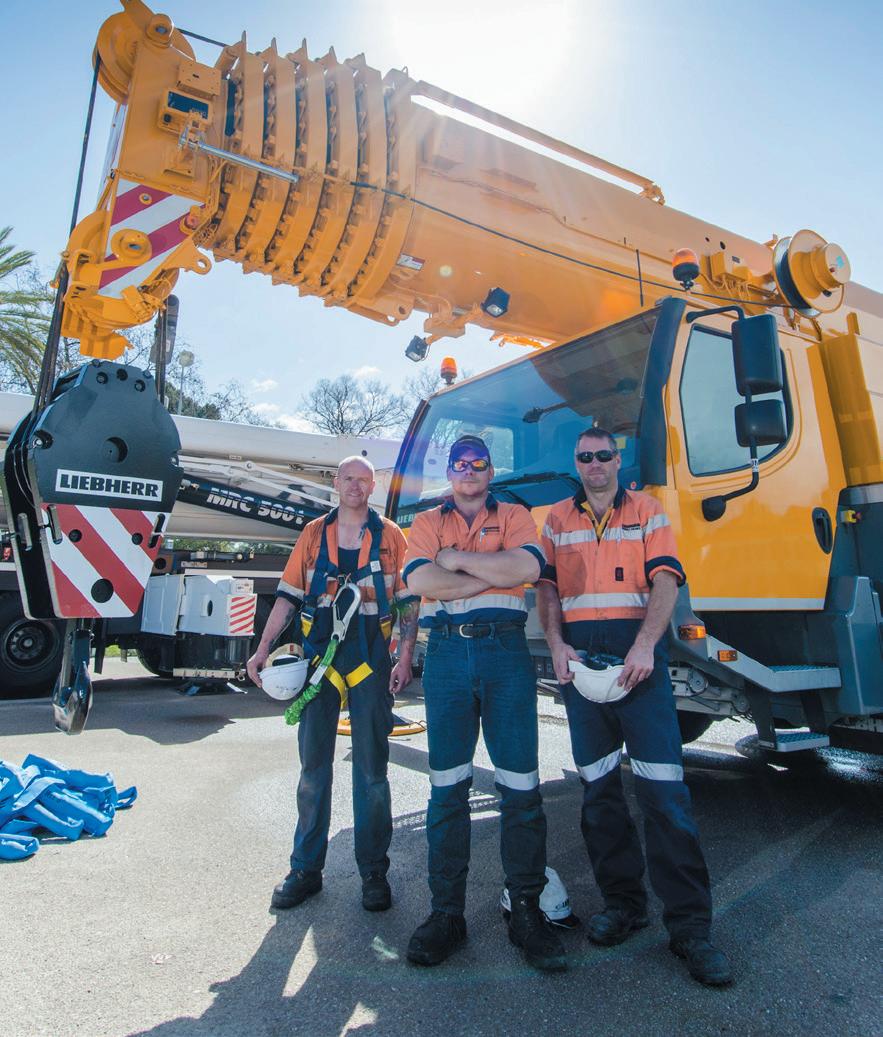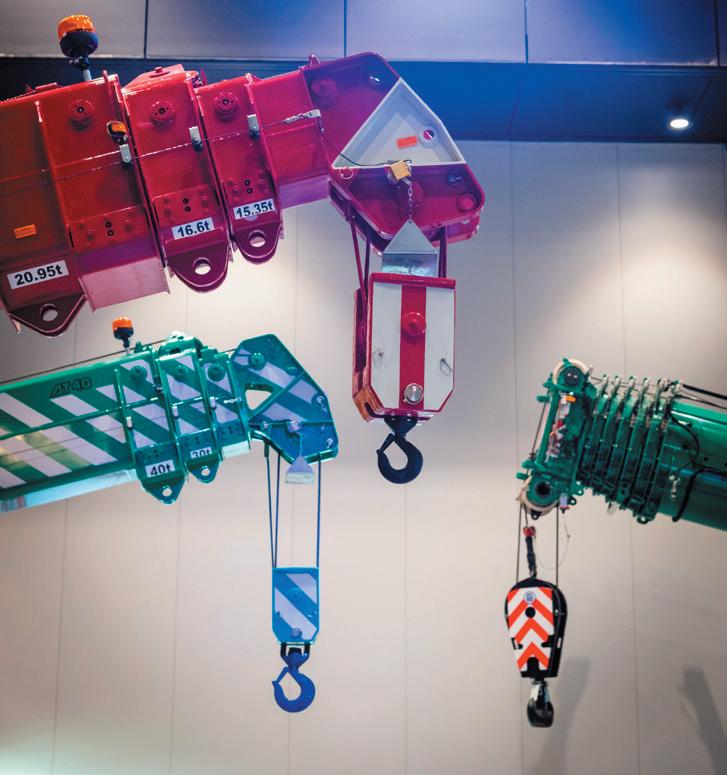
5 minute read
WORKING SAFELY
Chain of Responsibility Law

Advertisement
Article contributed by ALICE EDWARDS, Project Engineer - CICA
The National Heavy Vehicle Regulator works to make the industry safer and this entails working together with stakeholders and making all parts of the supply chain accountable for the demands and pressures their off-road activities have on drivers and ultimately, other road users. Chain of Responsibility (CoR) means that not only is the driver responsible for safety on the road, but anyone who has control or influence over the transport activity.
The Heavy Vehicle National Law (HVNL) amendment went into effect on 1 October 2018 and has made some significant changes to the CoR law (see HVNL Chapter 1A, Part 1A.2, Clause 26C). The amendment abolishes deemed liability for parties in the CoR and replaces it with a duty to ensure, so far as is reasonably practicable, the safety of the party’s transport activities relating to the vehicle. This aligns CoR laws more closely with workplace health and safety laws.
Even though mobile cranes are a purposebuilt plant that is designed to perform lifting tasks, and lifting activities performed by mobile cranes are completed primarily off-road, according to HVNL Chapter 1,
Part 1.2, Clause 6, mobile cranes are “heavy vehicles” and they are regulated under the HVNL. This means that crane owners need to comply with the requirements specified in the HVNL including the new CoR amendment for mobile cranes travelling on the road. Crane owners operating under the WHS regulations could apply the risk management process for lifting activities on site to travelling activities on the road, to manage their safety duty obligation under the HVNL.
Safety Management System
The best way to comply with the CoR law requirements is to have safety management systems (SMS) and controls in place, such as business practices, training, procedures and review processes. Having an SMS demonstrates that you are taking your safety obligations seriously by adopting a proactive approach to managing hazards and risks in your business.
Regardless of the size of a business, all parties in the CoR for heavy vehicle transport activities have a responsibility to ensure the safety of their operation. For example, a large crane hire company with many mobile cranes and crane support vehicles would most likely require a detailed and more complex SMS to ensure safety throughout their operations. A smaller crane hire company, however, may develop their SMS using basic procedures, checklists, and other simple tools. While these approaches are different, they can still achieve the same safety outcomes because they are appropriate for the size of the business and the activities it undertakes. Typically, an SMS is made up of four key components [1]:
Safety policy and documentation - outlines what your business will do to manage safety. It focuses on the safety objectives, commitment, and accountability of your management and business owners and defines how they will build on experience to continually improve their SMS.
Safety risk management - this is the most important component of your SMS as it focuses on the risk identification, assessment and reporting process. The Master Code and the Crane Industry Code of Practice (the Crane Code) mentioned below, are two documents you can use for safety risk management.
Safety assurance - this component focuses on the ongoing reliability and performance of your SMS. Safety assurance is most often done through some form of regular monitoring and analysis of the system by conducting investigations after incidents or when errors occur, as well as undertaking audits or reviews of safety-related processes and procedures.


Safety promotion and training - this component helps ensure everyone in your business is aware of your SMS and understands it. Safety promotion aims to encourage a positive safety culture within your business by involving your employees in developing your SMS and making safety improvements. Safety-related training ensures your employees know what’s required of them and how to do it.
Not all four components are required for a company’s SMS, so crane owners should develop their own SMS based on their own business operation.
Industry Code of Practice
An Industry Code of Practice establishes standards and procedures for parties in the chain of responsibility to identify, analyse, evaluate and mitigate the general risks associated with meeting obligations under the Heavy Vehicle National Law (HVNL).
Adopting the Code of Practice in your SMS is a voluntary choice by a party in the Chain of Responsibility. It is one way to take responsibility for the safety of transport activities. While applying the Code of Practice is not mandatory, it should be noted that a distinguishing feature of a Registered Industry Code of Practice (RICP) is its evidentiary role in court proceedings pursuant to chapter 10 of the HVNL [2] .
There are two Industry Code of Practice documents that are relevant to the crane
industry, one is the Master Code and the other is the Crane Code. The Master Code published by the National Heavy Vehicle Regulator on 23 November 2018 is a Registered Industry Code of Practice that applies to all types of heavy vehicles and loads covered by the HVNL. The Crane Industry Code of Practice developed by CICA is currently in the final review stage and is a supplement code to the Master Code for the crane industry. The relationship between the Master Code and the Crane Code is similar to the relationship between AS1418.1 and AS1418.5.
The Crane Code covers the following types of plant-based mobile cranes: • All terrain cranes • Articulated cranes • Hydraulic truck cranes • Rough terrain/city cranes
Cranes that are truck-based, namely vehicle loading cranes are not covered in the Crane Code, so vehicle loading crane owners should adopt the Master Code in their SMS.
The Crane Code of Practice considers and assesses risks and control measures that are specific to crane operations and identifies risks and control measures in the Master Code that are not applicable to mobile cranes. An example is that the Crane Code specifies that according to the HVNL Chapter 1, Part 1.2, Clause 7, mobile cranes covered under the Crane Code are not fatigue-regulated heavy vehicles. It is, therefore, not a requirement under the law, to manage the fatigue of the driver/operator of the mobile cranes in accordance with the applicable work and rest hours option (section 243 of the HVNL), and it is not a requirement under the law for the mobile crane driver/operator to maintain a work diary (section 293 of the HVNL).

The Crane Industry Council of Australia (CICA) as the administrator of the Crane Code welcomes your comments on the Draft Crane Code. Please contact Alice Edwards: projeng@cica.com.au for a copy of the Draft Crane Code.
[1] Safety Management System, NHVR, May 2018 - https://www.nhvr.gov.au/files/201805-0797-sms-fact-sheet.pdf [2] Master Code, NHVR, November 2018 - https://www.nhvr.gov.au/files/ricp-master-code.pdf Photo Credit: Rix Ryan Photography










